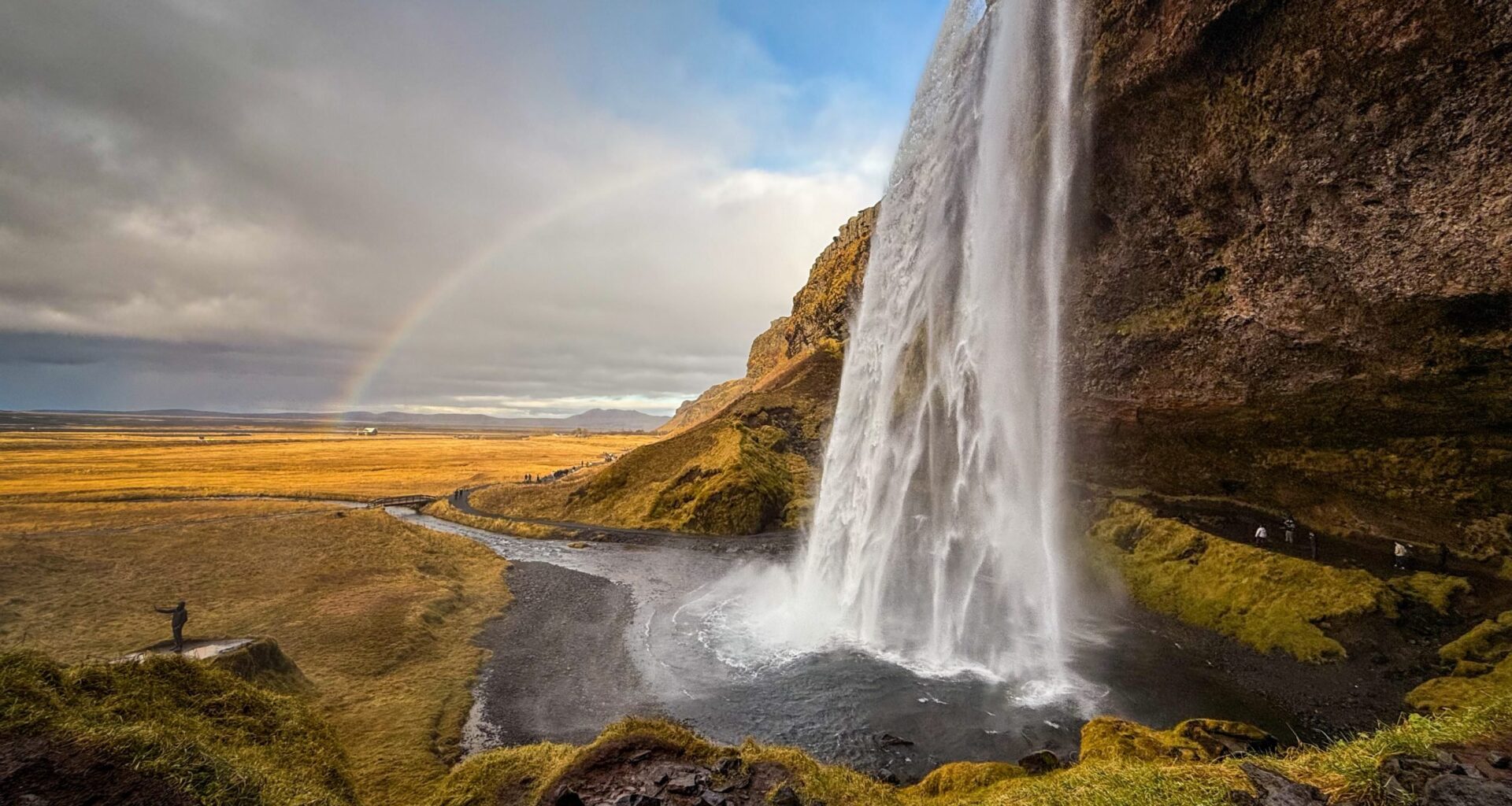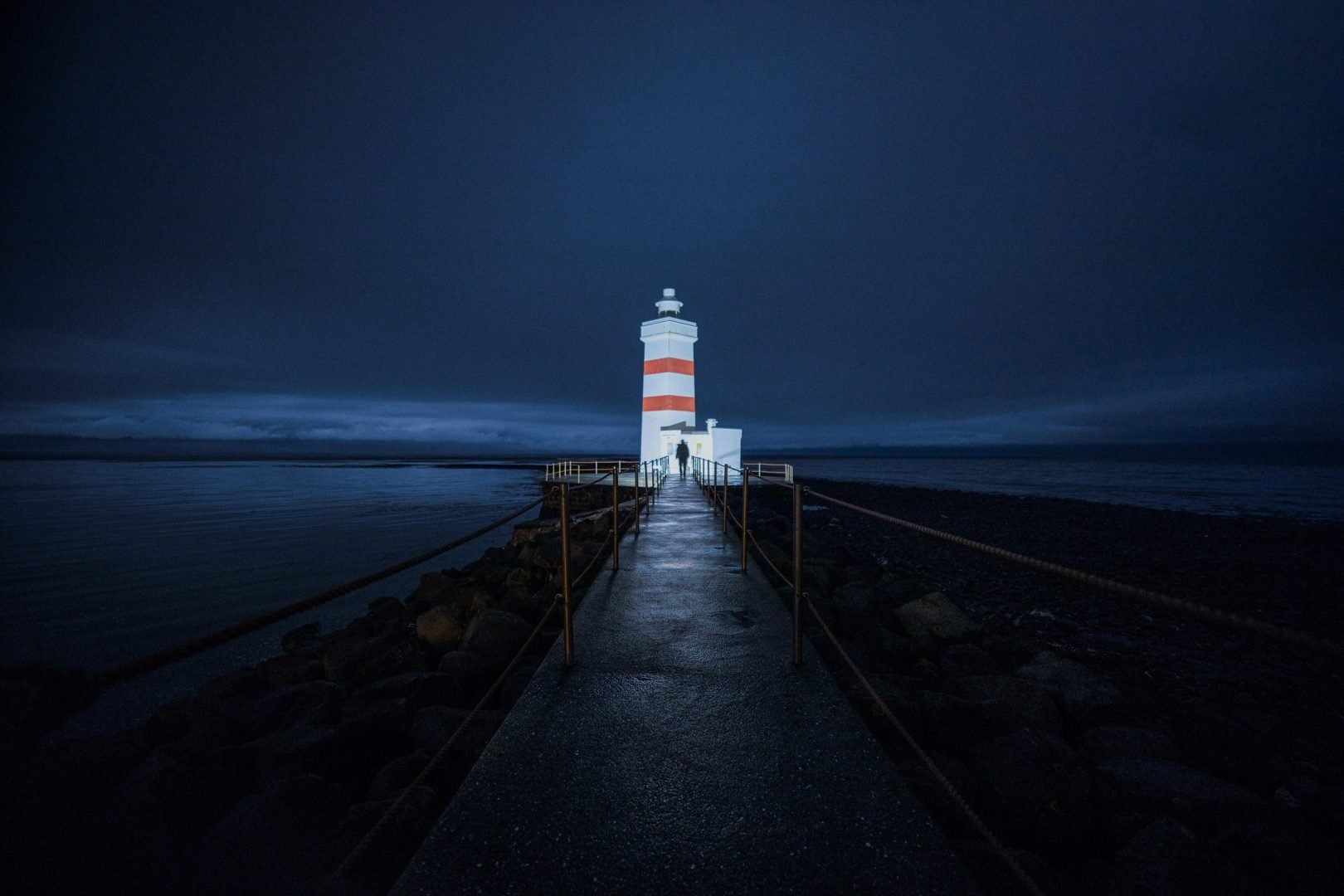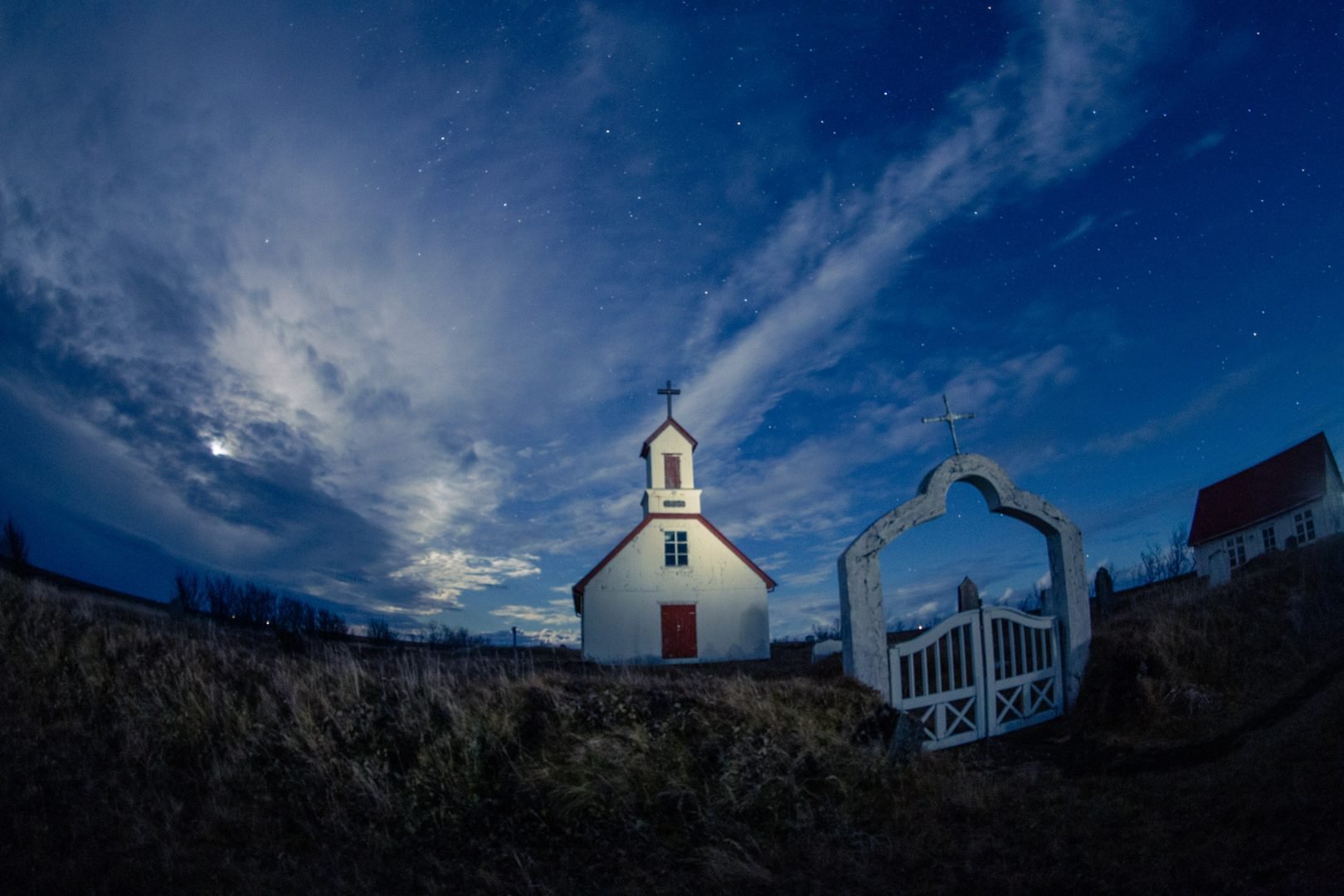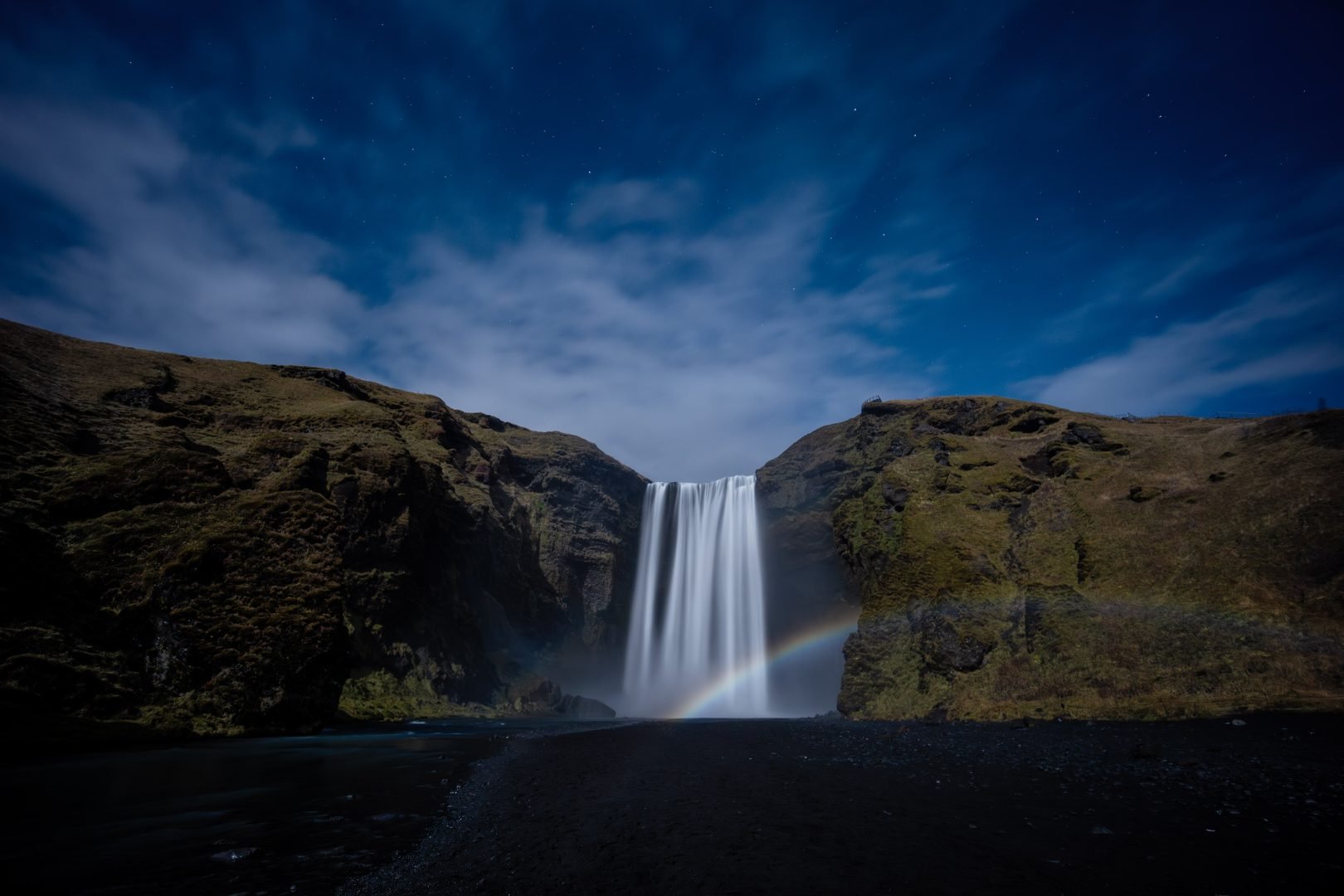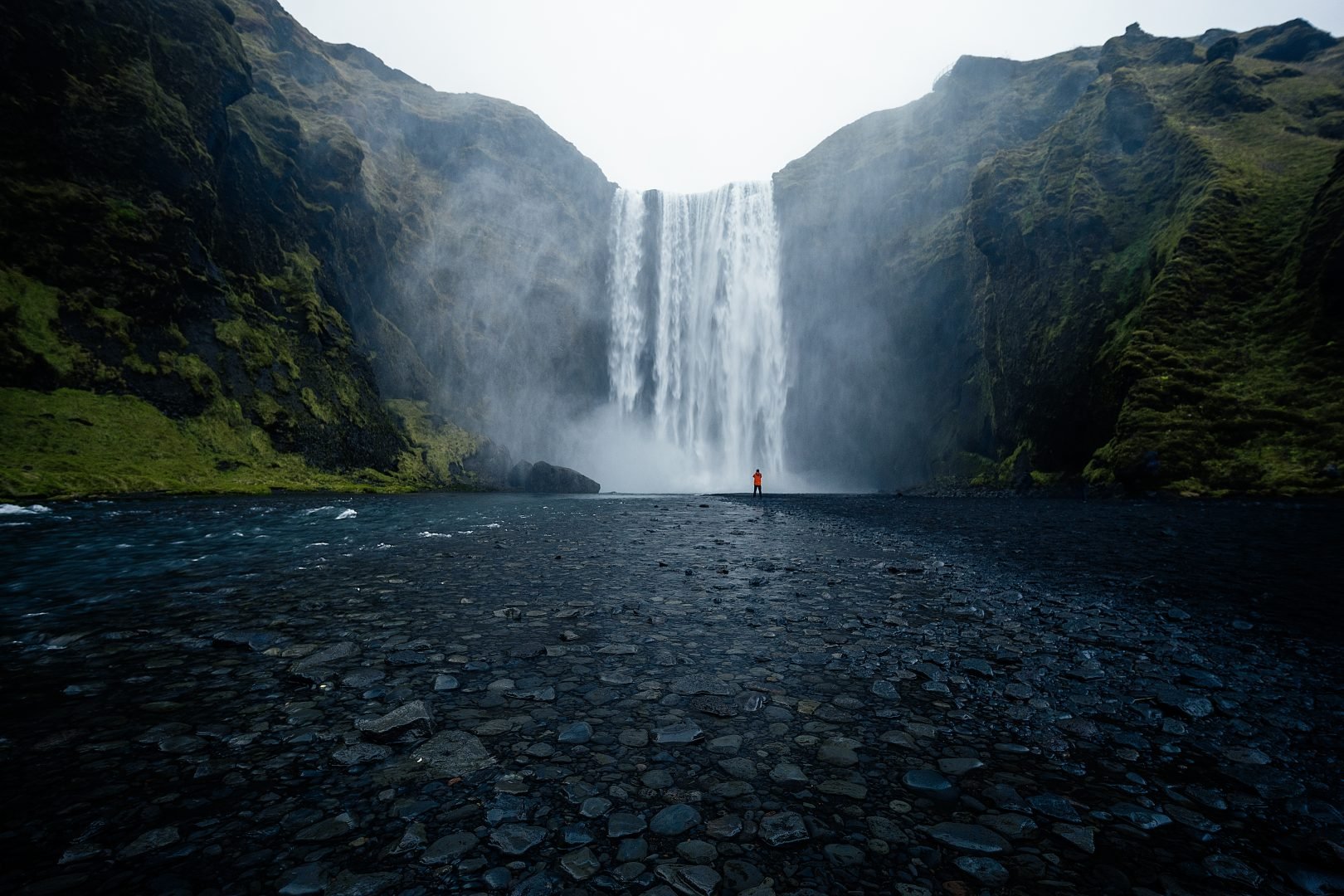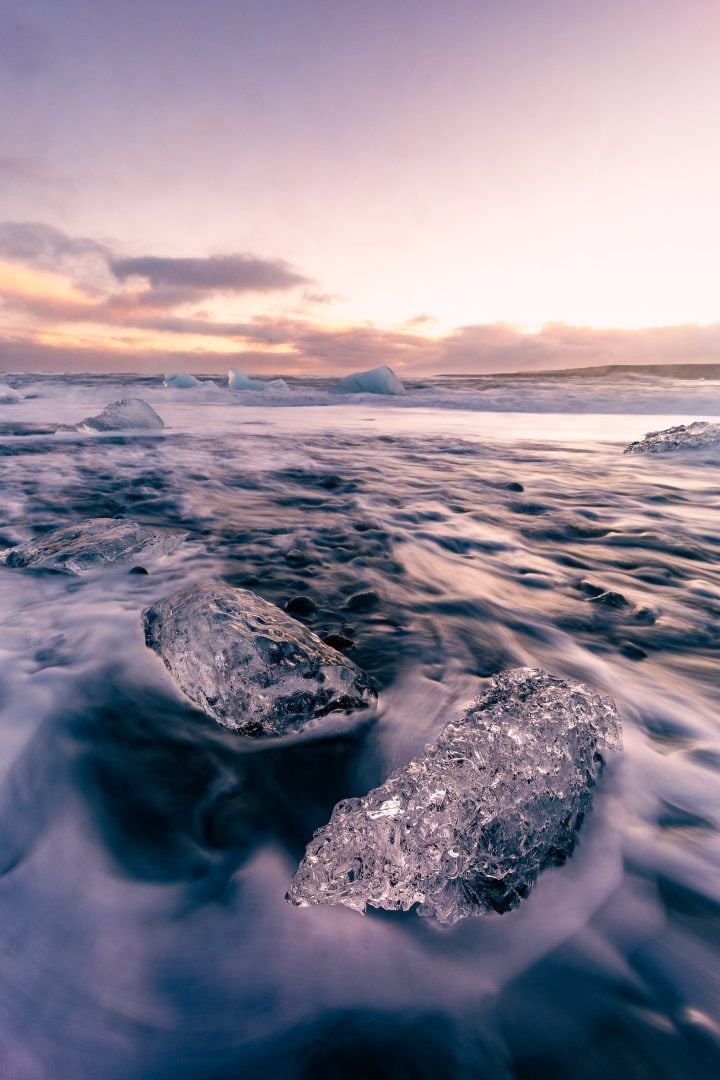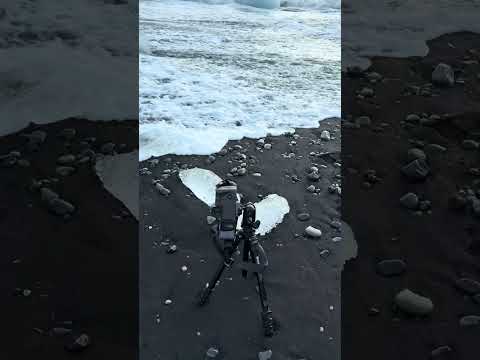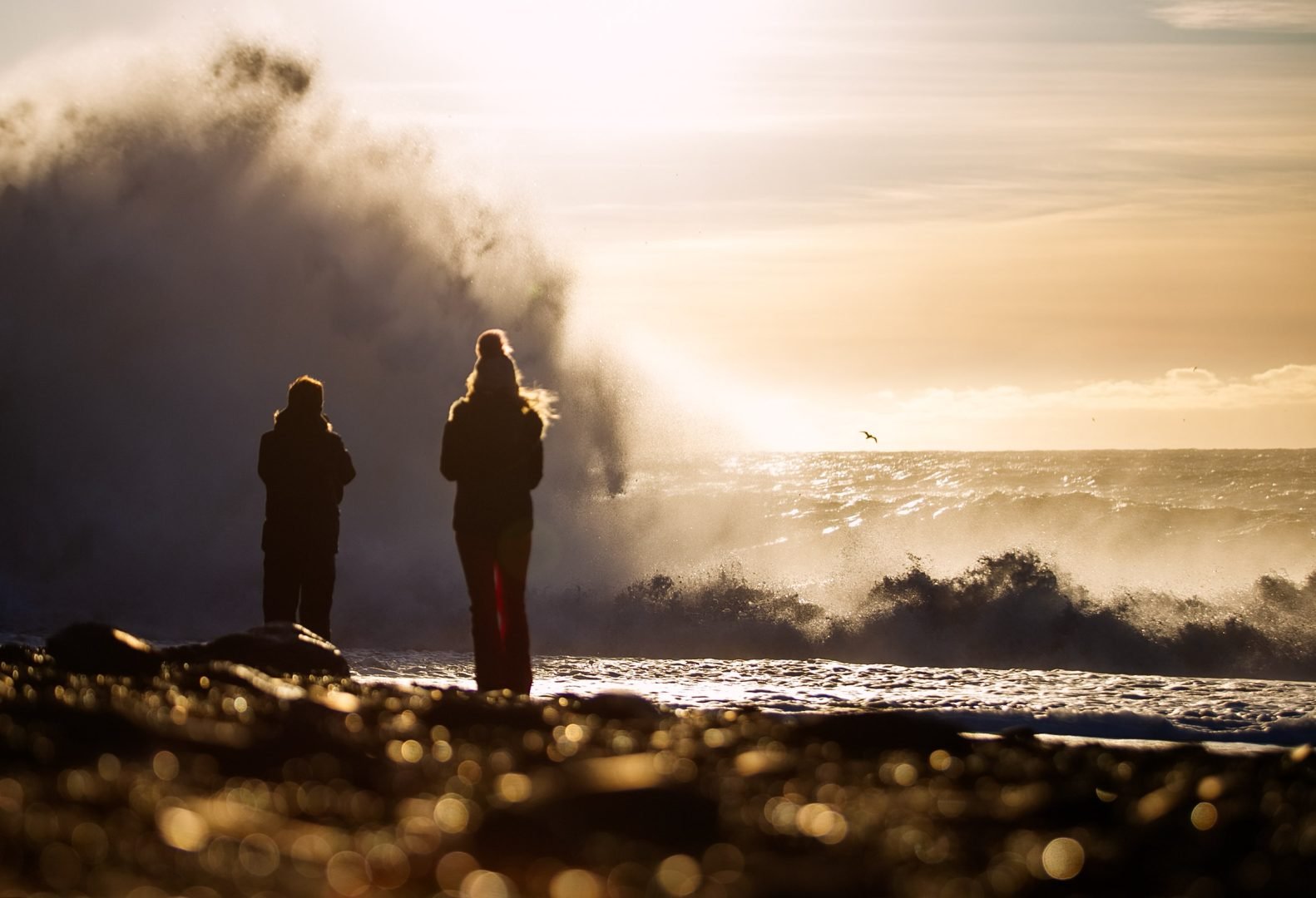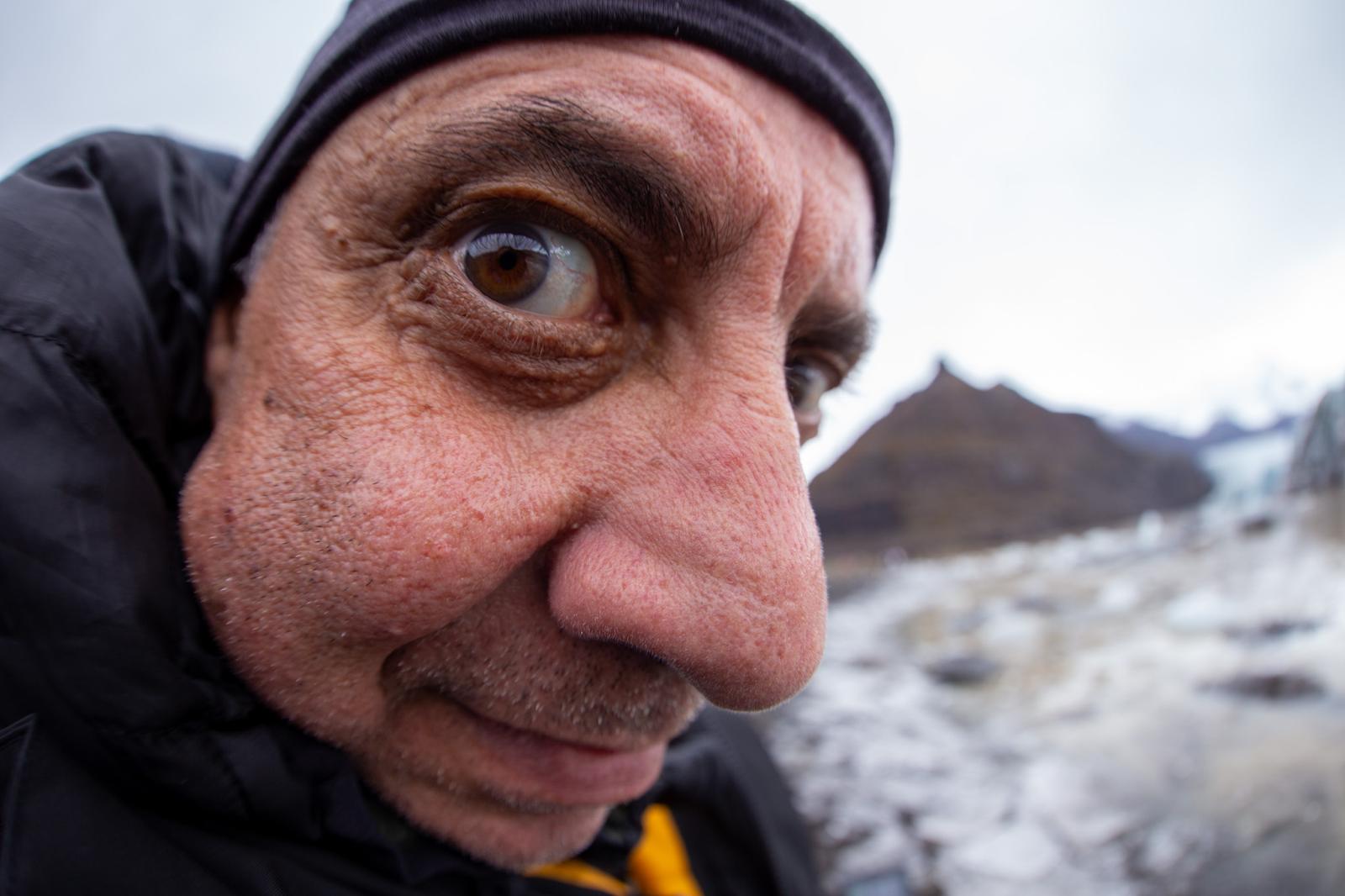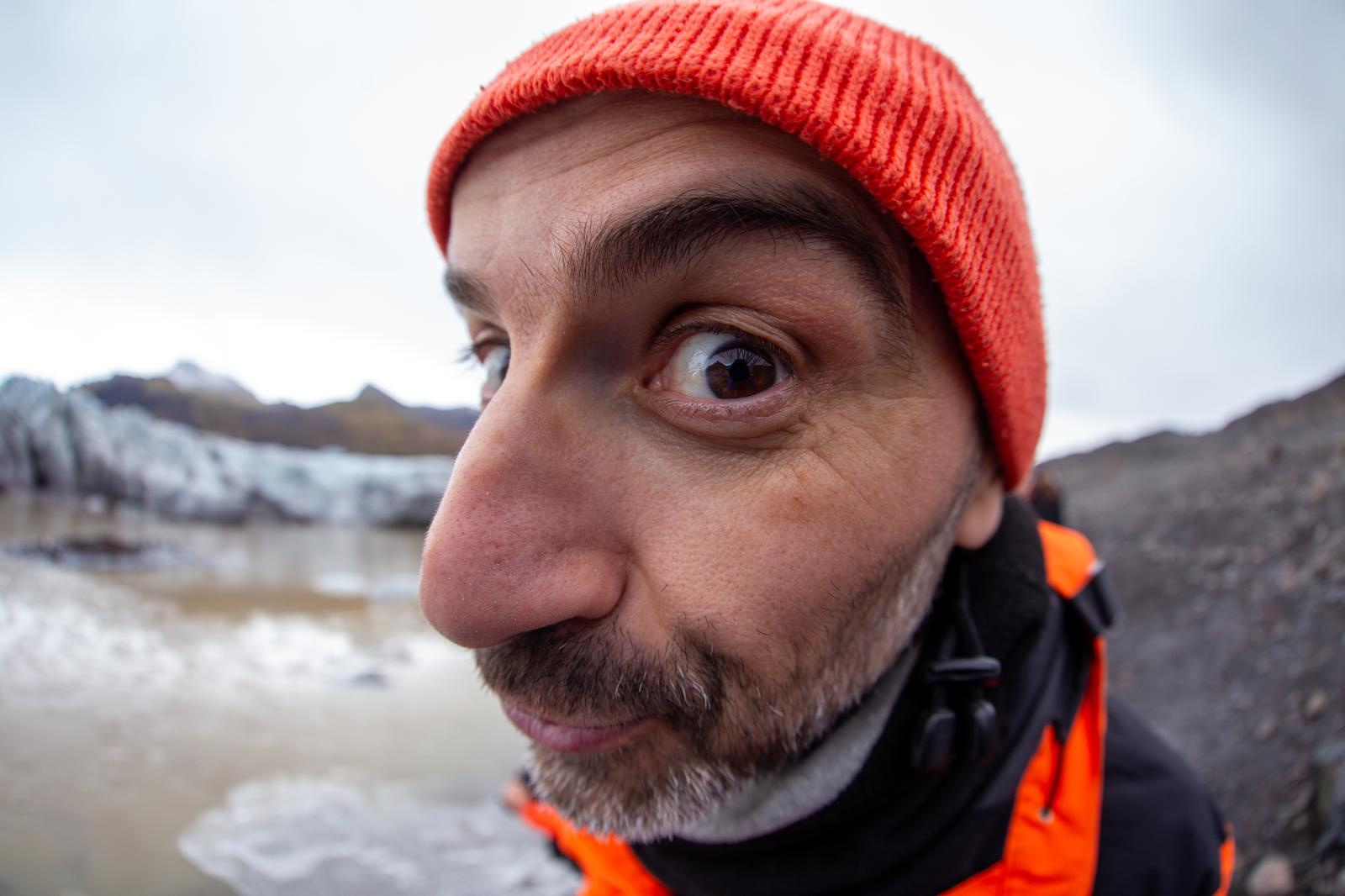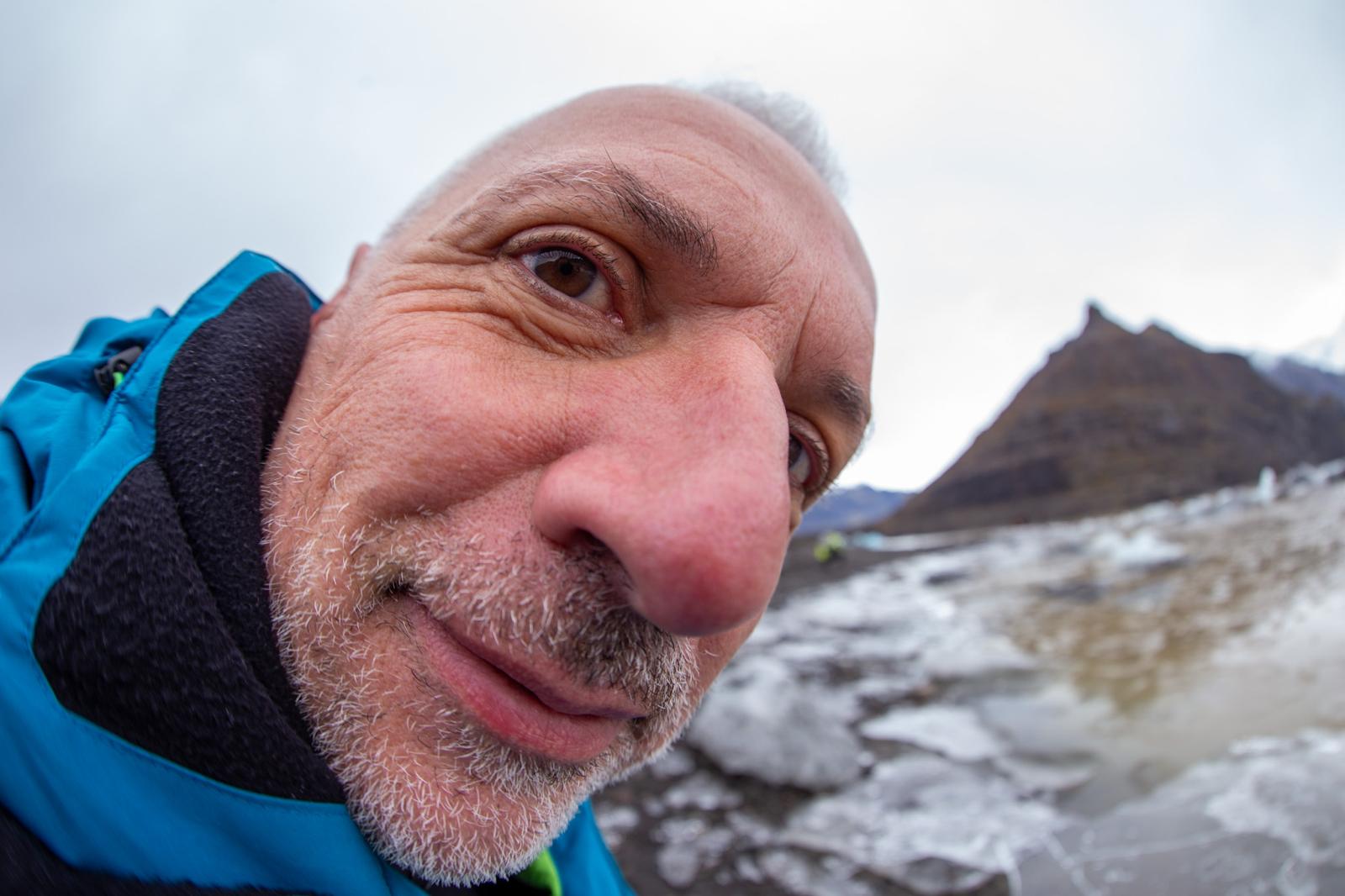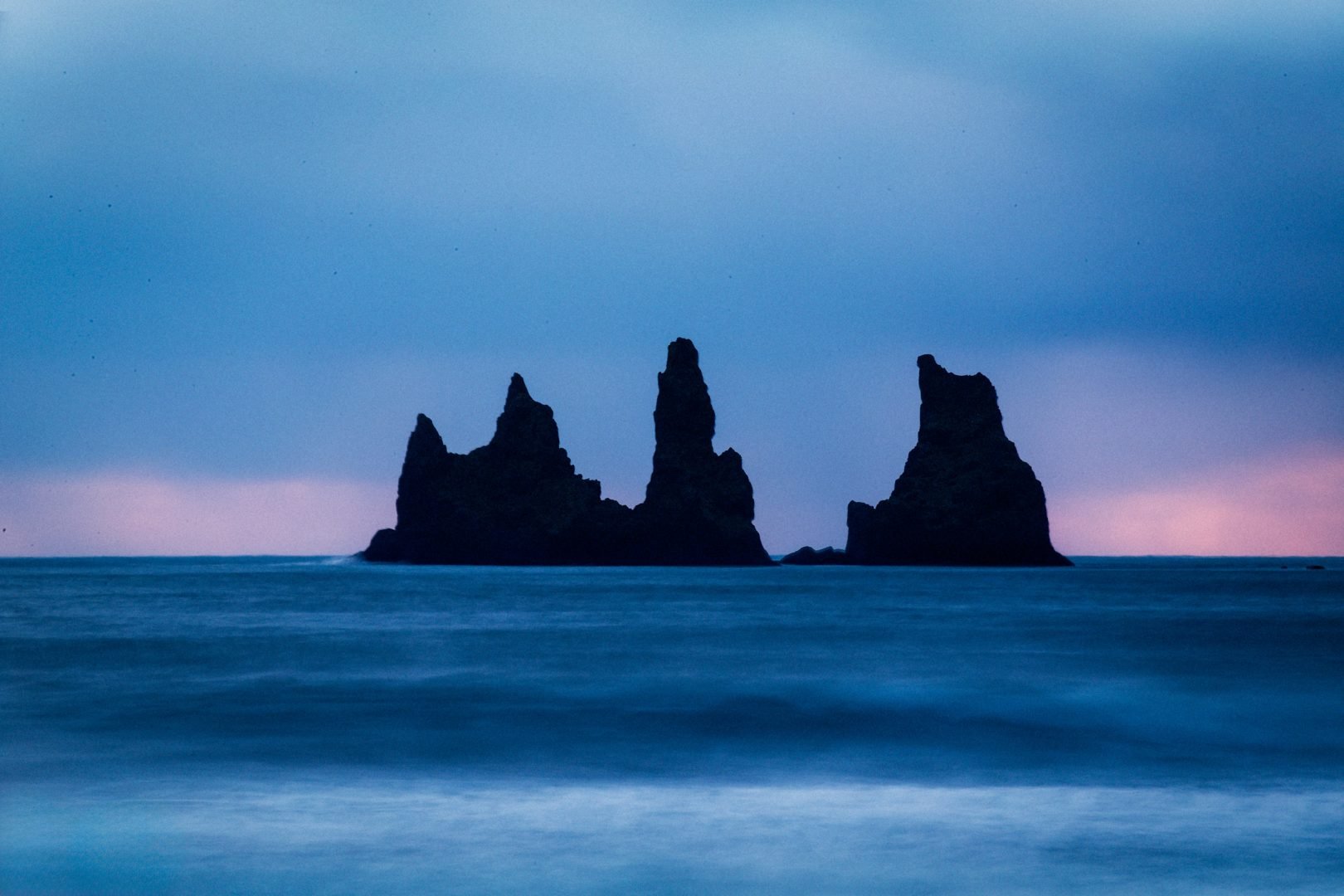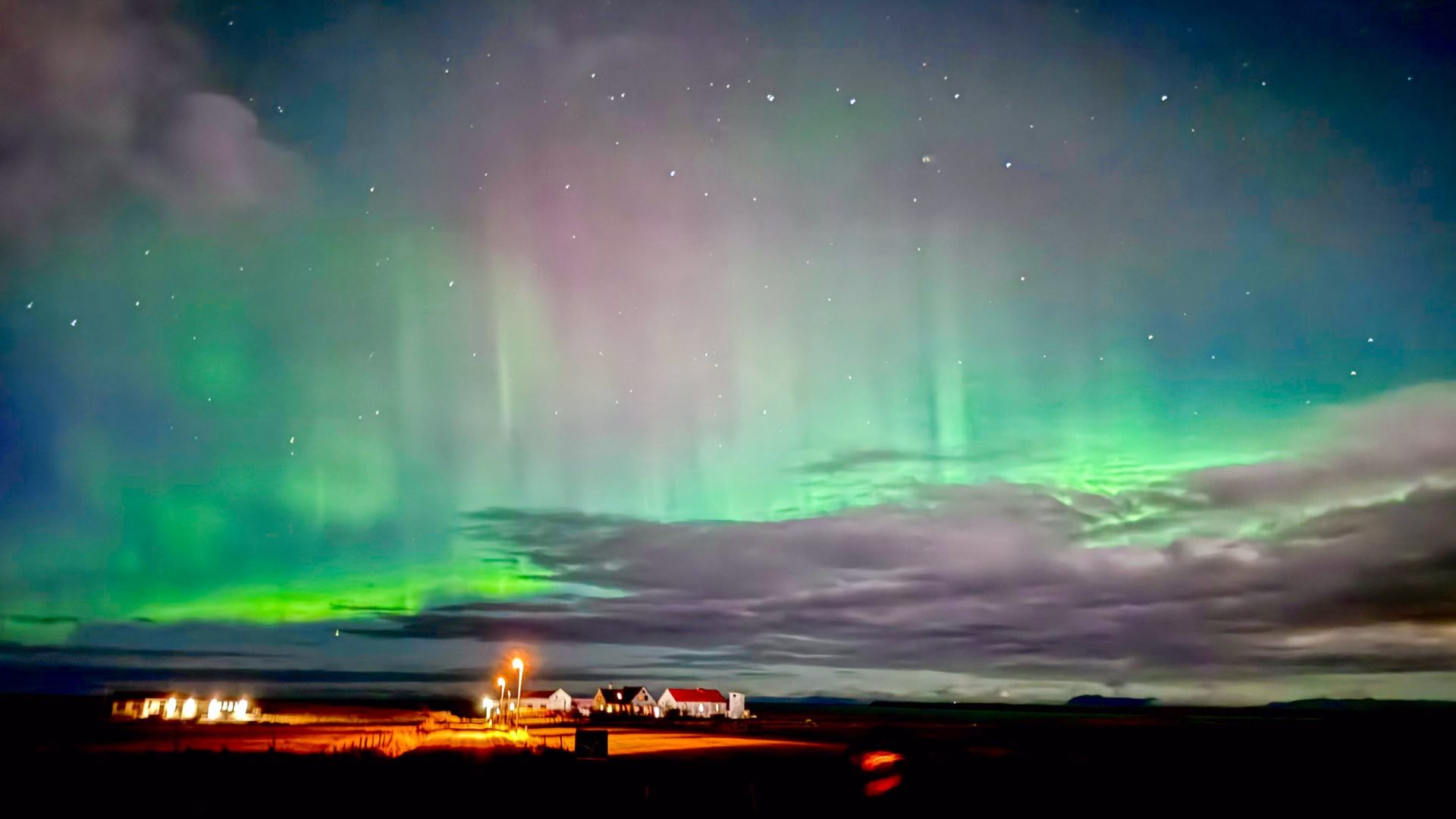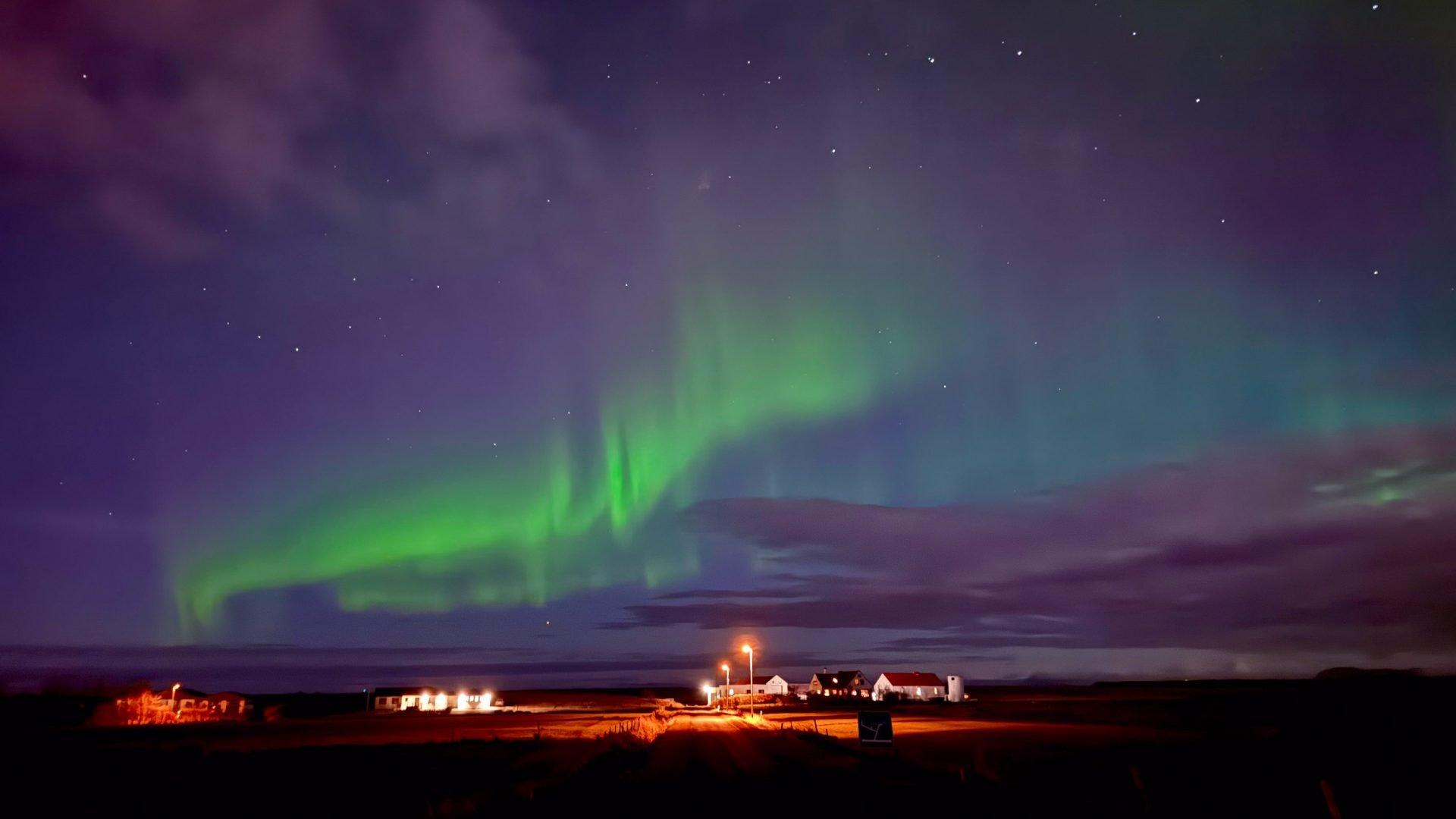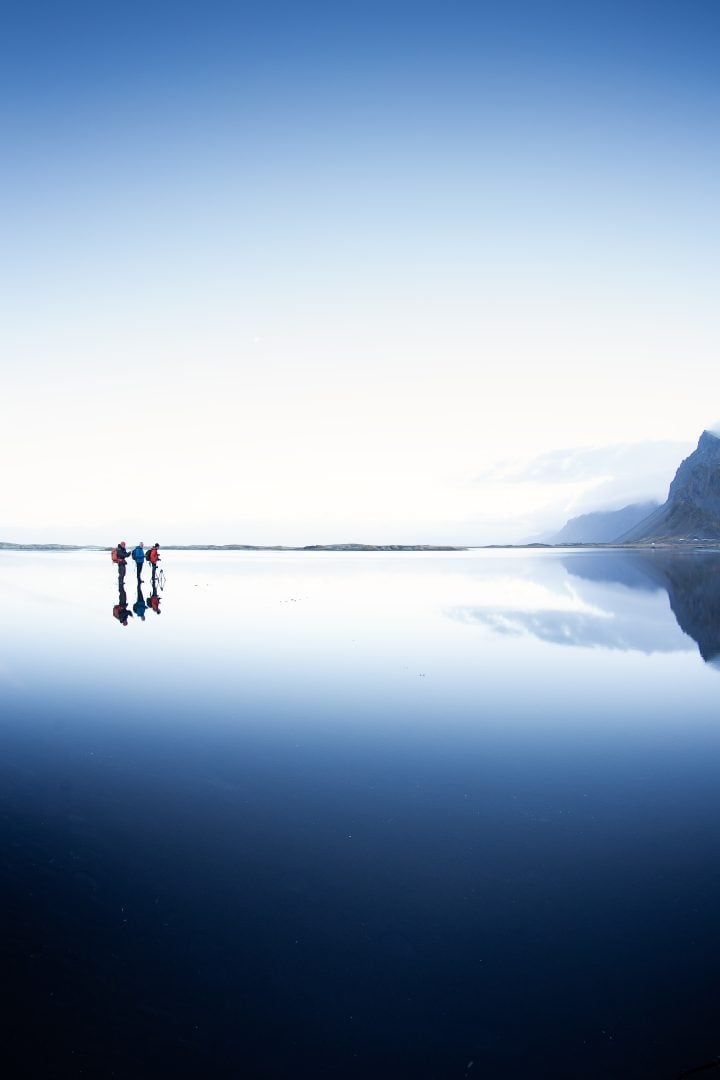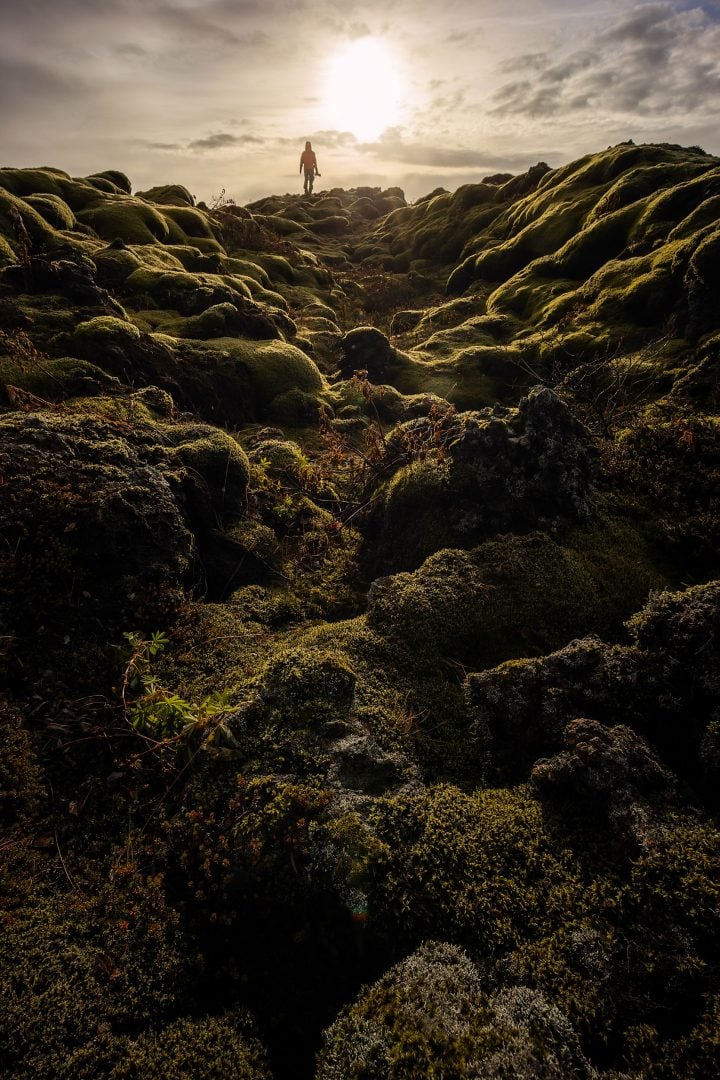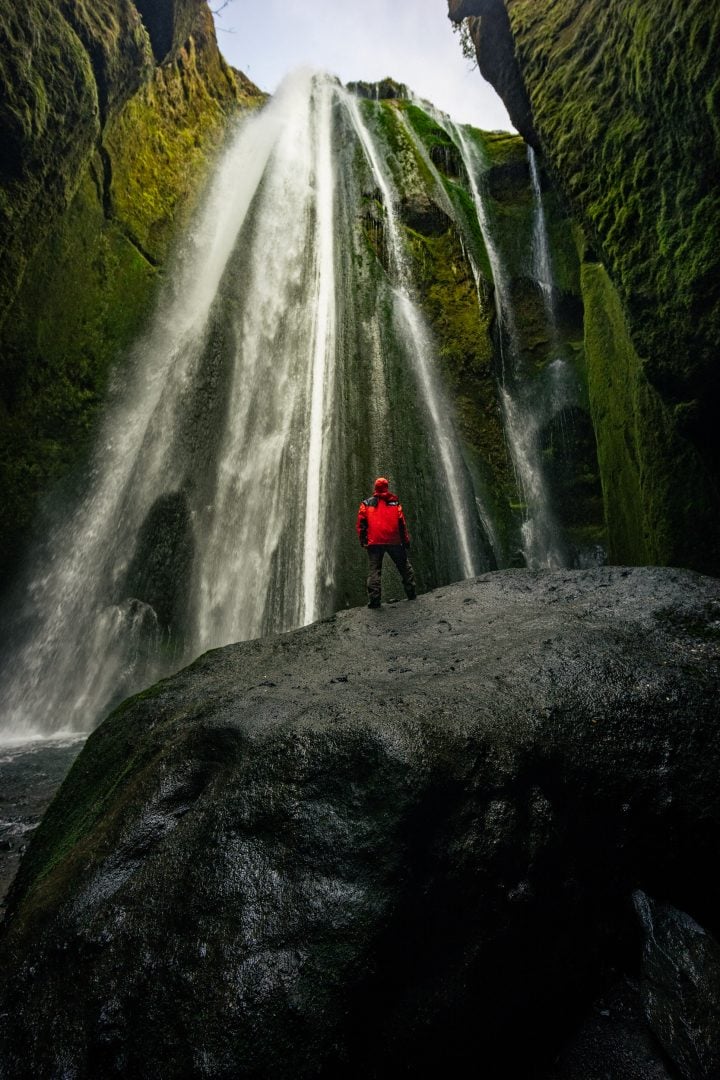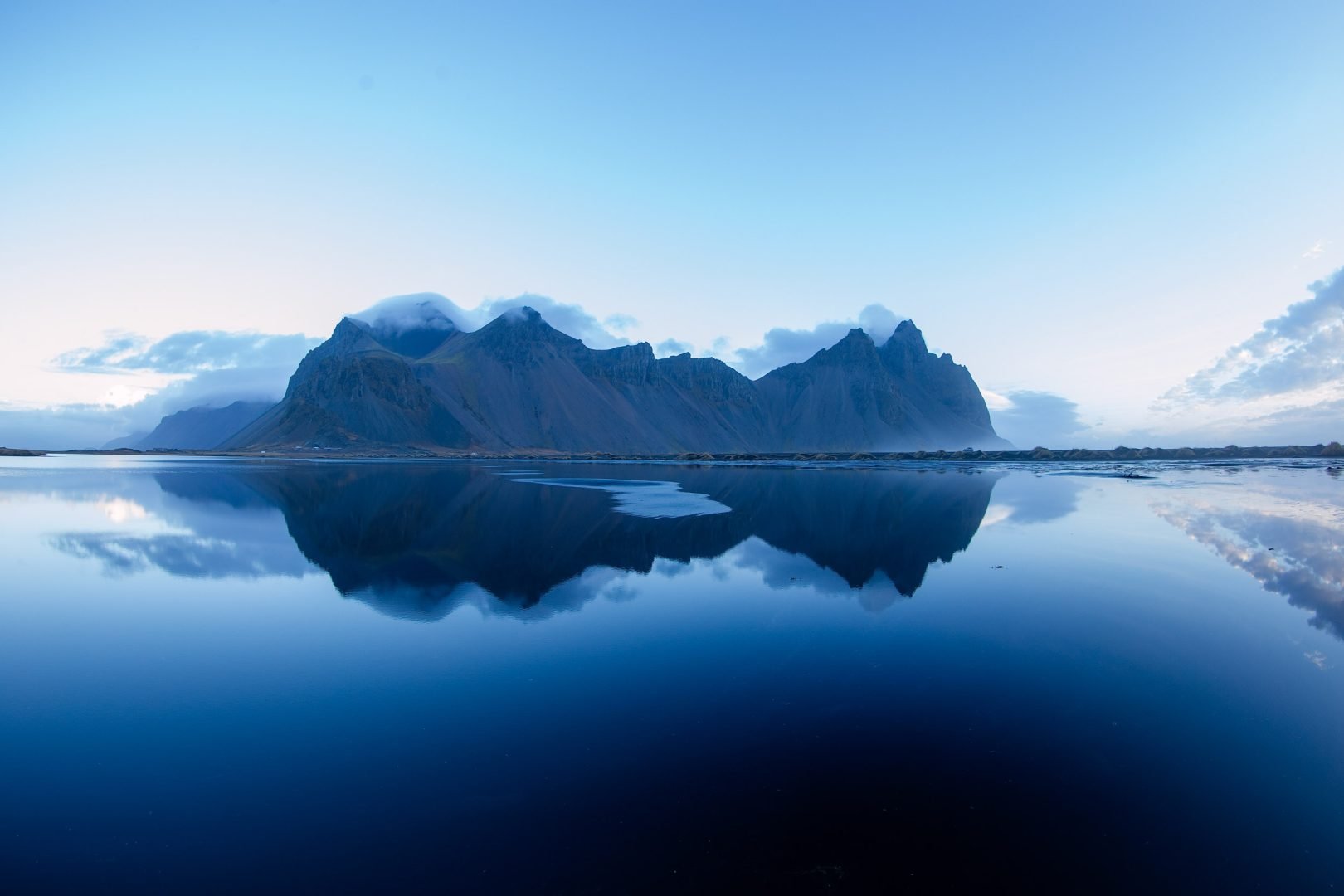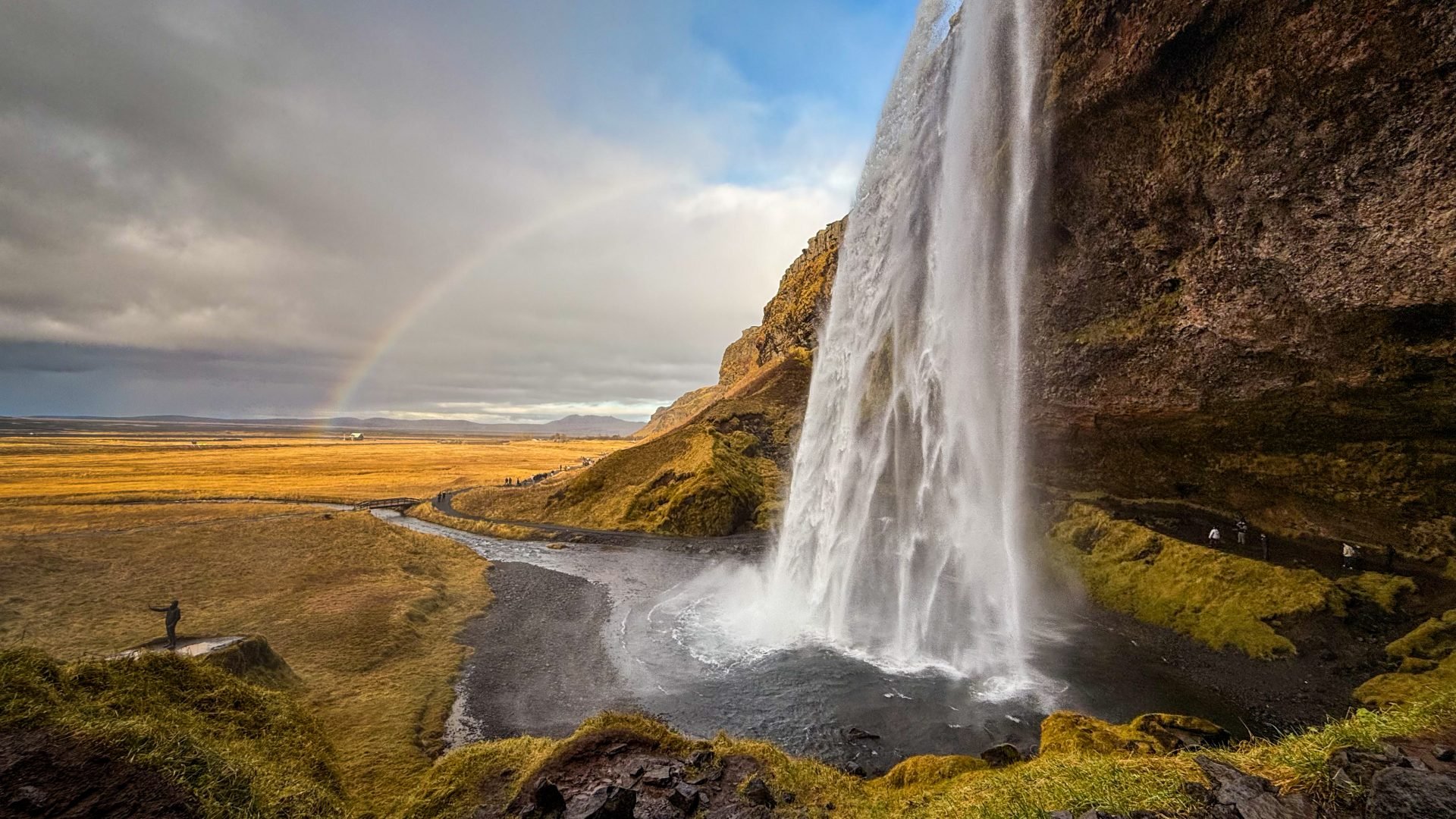
Iceland has been at the top of my list to visit for years, and when I discovered that this year was a great year for photographing the aurora borealis, I knew I had to go. Iceland’s landscapes are a dream come true for photographers, with its sweeping volcanic plains, majestic waterfalls, black sand beaches, and surreal glacier formations. The country’s raw, untamed beauty offers endless inspiration, and there’s almost a photograph every 5 metres, but it also presents unique challenges.
I opted to go on a dedicated tour run by landscape photographer and Canon ambassador Paco Farero. Paco specialises in night sky photography, and with over 40 tours to Iceland under his belt, it was a good bet that I’d see the aurora. The trip was in October, so I knew the weather would be unpredictable. With my six layers of clothing, I was prepared for almost anything, but as I would soon learn, Iceland had some surprises in store for me!
Discovering Iceland at night
After landing in Keflavik airport at 2am local time, we set straight out to photograph a nearby lighthouse. There was almost 100% cloud cover, a theme that unfortunately was set to continue the whole week. However, that didn’t dampen our spirits, and we gladly (sort of) roused ourselves out of bed at 3am most nights to capture some unique images.
One particularly special moment was at Skogafoss, an epic waterfall that is popular with tourists for obvious reasons. We’d visited it during the day, but now in the middle of the night it was something quite different. Bathed in light from a full moon, the fine mist of rain created a rainbow in front of the falls. Again there was cloud cover, but it was still spectacular.
The weather worsened during the week, with a full gale-force storm coming in from the south. We managed to get out and about during the day, but the aurora couldn’t cut through the thick clouds at night. Still, Iceland has a plethora of stunning landscapes, and while I would not count myself as a pure landscape photographer, the scenery inspired me with a renewed creativity and passion for photography, which was something that I’d been lacking recently.
Disaster strikes: Losing my camera to the ocean
After the storms had passed, we travelled along the south coast to Diamond Beach. This beach is well known for its blocks of ice that break off from the glacier and wash up on the black sand. It’s a stunning location, and Paco had arranged everything so that we would be there for golden hour, catching the rays of sunlight through the ice.
It was absolutely stunning, and we learnt how to set up the camera with a wide lens (I used a 15mm Laowa prime) very close to the ice. We would then wait for the waves to come up to the camera and gently wash around the tripod legs, pressing the shutter at the moment the wave started to recede.
The camera at Diamond Beach moments before the wave struck
While I was a bit stressed about leaving my camera in the water, it was all fun and games for a while. The method was working! That is until a more forceful wave snuck around from the side and knocked into my tripod, dunking my Canon EOS R entirely under the water. I pulled it out immediately, and the battery and card slots were still dry. It looked promising, and we wiped it down with fresh water, removed the battery and put it inside a ziplock bag with silica gel. And that was that for that camera and lens, at least until I could dry it out or take it in to get repaired once I got home.
I meant to say silica gel not silicon!
I’d love to say this is the first time I’ve ever done anything so silly, but sadly I can’t. There is precedent: when I was 8 years old, I dropped my Instamatic camera in the sea. Amazingly, after a bit of a clean-up, it still worked, and the roll of film was able to be developed! Sadly, modern cameras involve a lot more electronics and are more susceptible to water damage and corrosion.
Lesson #1: Always have backup equipment
Luckily, I’d brought other lenses and a spare camera body. Admittedly, it was an older full-frame DSLR; however, I still had other lenses that would work with it. I borrowed a 15mm fish eye lens to still be able to capture wide sweeping landscapes and also made use of the telephoto 70-200mm plus the 35mm and 50mm primes.
I also had my iPhone 16 Pro with me, which honestly captures extremely good images and video in 48mp raw, so I actually wasn’t disappointed. Using the phone in icey weather was actually a lot easier than continually getting the camera out of the backpack anyway, so I didn’t feel especially handicapped. It was also handy for experimenting with different compositions before setting up the tripod. I usually like to shoot handheld because I like the freedom to move around and find I get stuck on one composition too easily on a tripod.
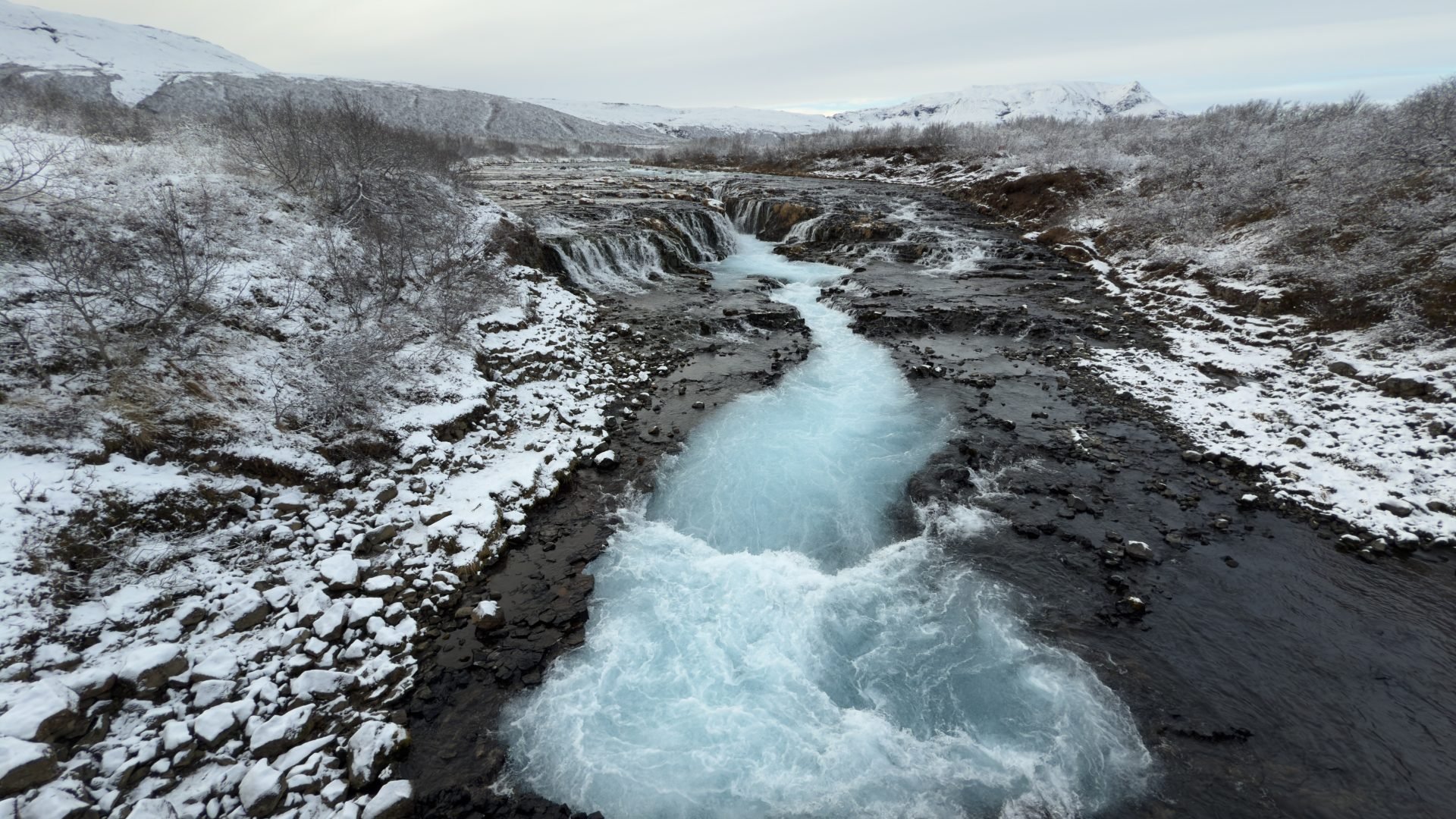
 Bruafoss taken with iPhone 16 Pro, wide angle RAW setting, no editing
Bruafoss taken with iPhone 16 Pro, wide angle RAW setting, no editing
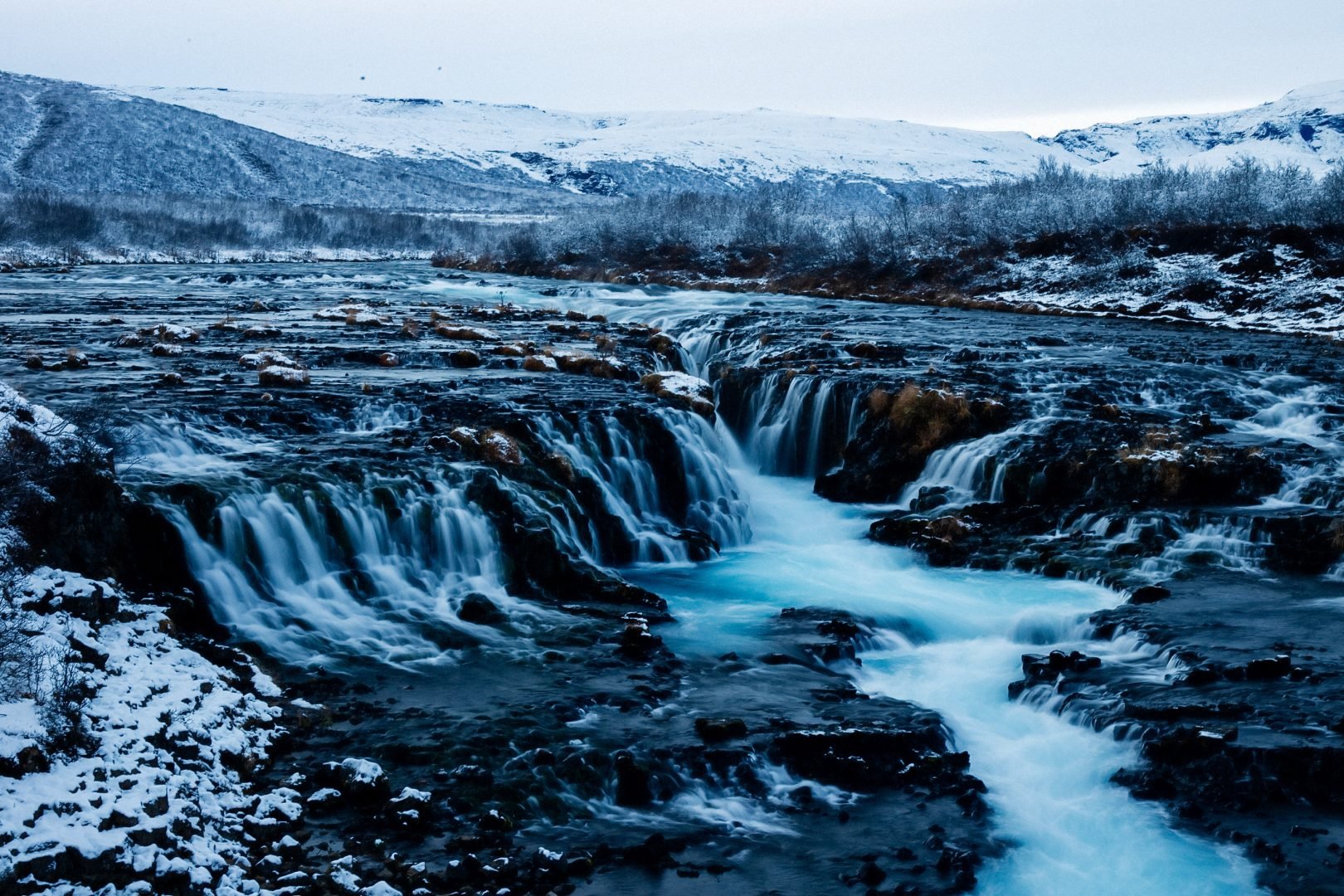
 Bruafoss shot on Canon 6D with 50mm lens, long exposure, edited in Lightroom and Photoshop
Bruafoss shot on Canon 6D with 50mm lens, long exposure, edited in Lightroom and Photoshop
The one thing that I would do differently next time (apart from leaving my camera to fall in the sea) would be to have two camera bodies that use the same mount system. In my case I was mostly using the Canon R mirrorless camera which uses the RF mount. I often still use EF lenses with an adapter so that wasn’t a huge concern, however, it did mean that these two bodies weren’t 100% compatible.
Lesson #2: Adaptability is key
When you’re in the Arctic circle, the weather is always going to be unpredictable, even in the summer. The main concern was to keep ourselves warm and dry, and this was one reason why I wasn’t standing knee-deep in the sea next to my camera. In the Mediterranean Sea, I would be. However, standing in ice-cold water for an hour or two isn’t going to be great, and while my boots were waterproof, they weren’t really designed for swimming.
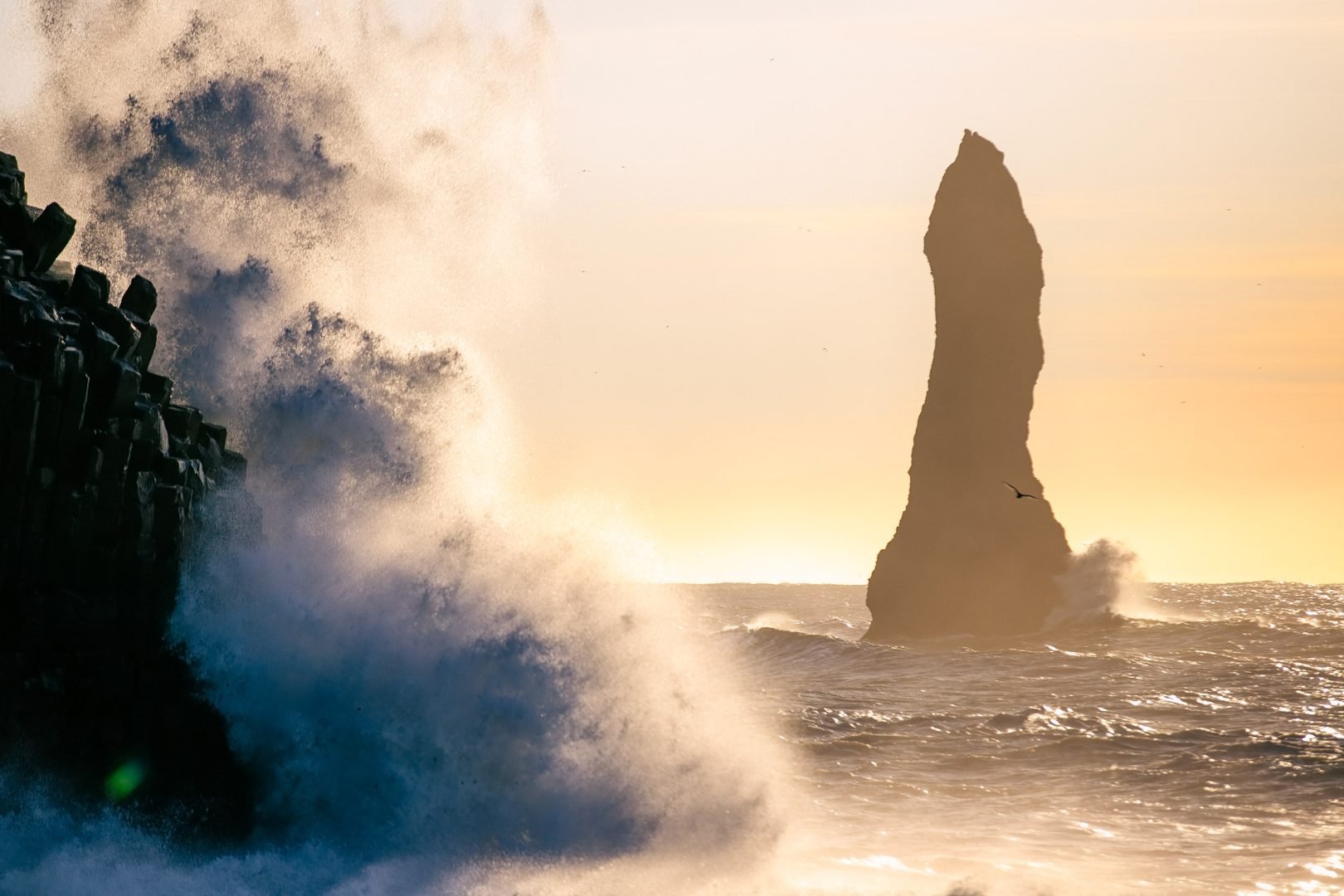
 Powerful waves at Vík, Canon 6D 70-200mm
Powerful waves at Vík, Canon 6D 70-200mm
Iceland has some wildly beautiful beaches, but that can come at a cost. The black sand beaches near Vik, for example, often catch tourists and photographers who get a little too close to the waves. There are often sneak wave attacks that you just don’t see coming, and it’s always better to lose your equipment than it is to lose your life. It is, after all, just a camera.
My main annoyance (aside from not knowing if my camera would live or not and the ensuing costs of having a rubbish insurance company who probably wouldn’t pay out), was the fact that I now didn’t have a wide angle lens. Fortunately for me, the lens that got wet was a fully manual lens, with no electric components. It was looking good that the lens itself could be repaired. However, I still had four more days in Iceland.
In the end, I had fun seeing what I could capture wth the fish eye lens that I borrowed, the telephoto zoom, and 50mm lens. It pushed me to capture some different angles and points of view than I might have otherwise. I also couldn’t resist taking some comedy ultra-close-up portraits of some of the group with the wide-angle fish eye!
One of Iceland’s strengths is also its weakness: many of the famous photo spots are easily accessible and get photographed often by everyone. That makes it easy to get the low-hanging fruit shots but harder to create something different. Using a different lens from usual certainly stretched me in that way.
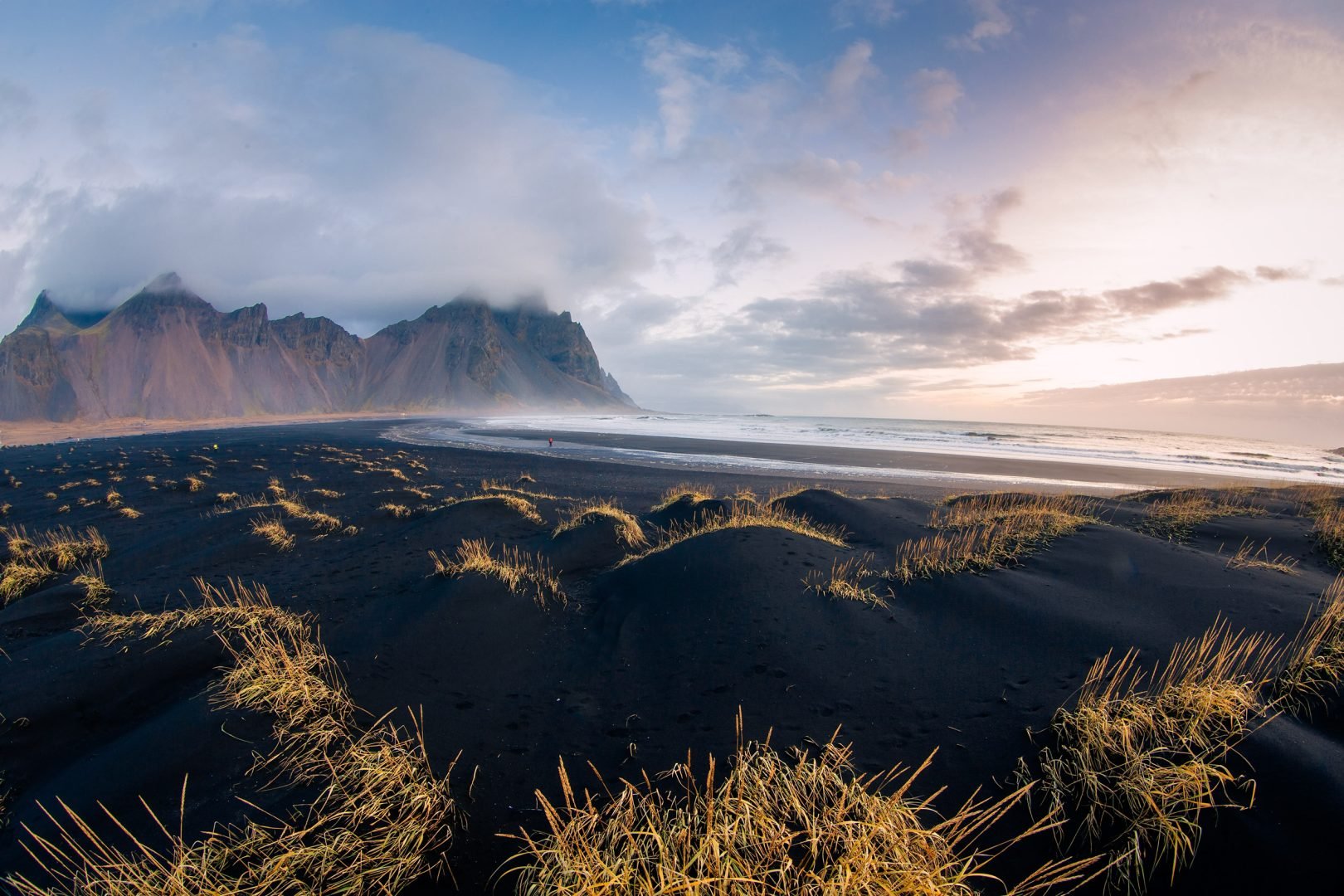
 Fun with the fish eye at Stokksnes
Fun with the fish eye at Stokksnes
Lesson #3: Embrace the moment beyond the perfect shot
Now, to lose around $2000 of camera gear in one moment in the middle of your long-awaited trip would probably knock most people sideways, at least for a moment. I must admit that I felt quite annoyed and disappointed. However, this was now out of my control, and I still had four more days in Iceland; I wasn’t going to waste those days moping about a dead camera.
So, I gave myself a little mental pep talk and decided to be positive about this. My camera was 5 years old, and it was a great camera, but I was probably going to have to think about replacing it in the next couple of years anyway. These things don’t last forever, and it was my workhorse camera. I think perhaps the others on the trip were surprised that I wasn’t crying into my cup of tea that evening; they were sympathetic, but I think also grateful not to have a downer in the group!
Why Iceland is worth every challenge
Perhaps slightly more disappointing was the fact that we only saw about ten minutes of the aurora the entire week. Paco was constantly checking the weather and we were out every night in some interesting locations hoping for a glimpse.
And one night, the clouds parted for a brief moment, and we caught a very faint light glow behind a hill. We all jumped in the van to get a better vantage point, eventually just stopping on the roadside verge. We only had time to capture the light show with our mobile phones, though happily, mine was able to capture it. It was still a spectacular experience and one that I’m keen to repeat. Even though this year is a particularly strong year for the aurora, nothing is guaranteed, particularly with landscape photography, and you have to surrender your control at times and just make the best of things.
In the end, my camera wasn’t repairable, although the lens was. The fact that the lens was fully manual helped a lot. Unfortunately, the saltwater had just done too much damage to the electronic components of the camera, and more than half of the interior would need to be replaced. For a 5-year-old camera that just isn’t worth it, I can buy a mint condition second-hand replacement for around $800. And I might, or I might take this opportunity to upgrade to either an EOS R6II or an EOS R5. I still haven’t decided yet. I will, however, be looking for better insurance!
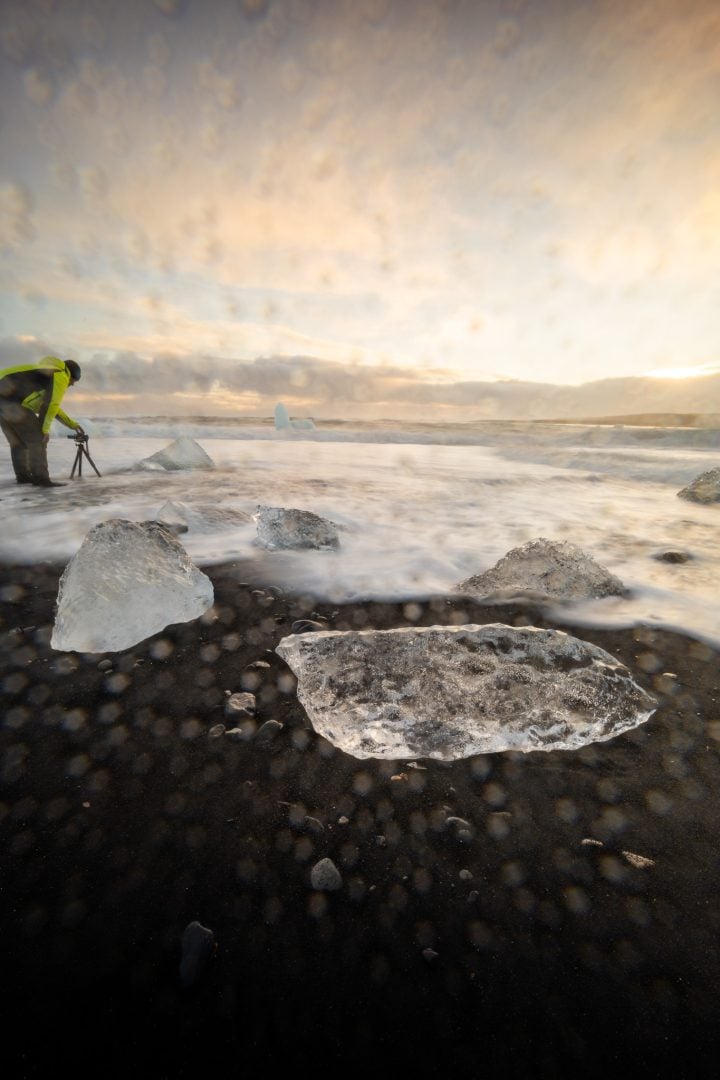
 Photographing at Diamond Beach
Photographing at Diamond Beach
Looking back, my photography trip to Iceland was both challenging and transformative. Facing unpredictable weather conditions and unexpected losses, like losing my camera to the ocean, pushed me beyond my comfort zone and taught me resilience, patience, and adaptability.
Iceland’s dramatic landscapes demanded a new level of respect and readiness, making me rethink how I approach photography. Rather than chasing the “perfect shot,” I learned to embrace the imperfections and spontaneity that come with working in nature.
For anyone planning an Icelandic adventure, I say go with an open mind, a spirit of adventure, and a willingness to weather the challenges. Iceland may test you, but that’s all part of the experience, and it makes each photo immeasurably rewarding. And if you’re going out at night to photograph, wear layers – six of them!
